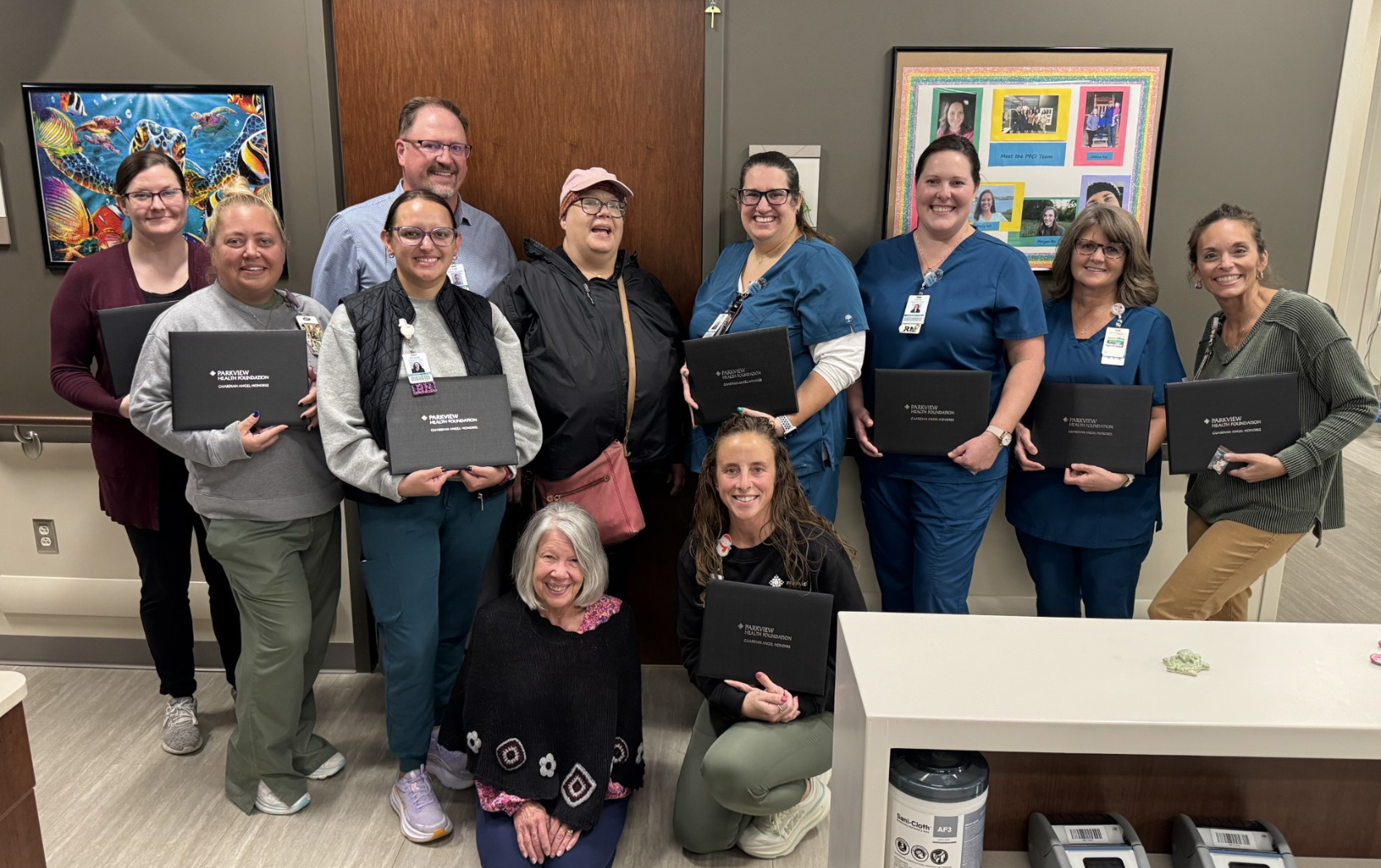
This post was written based on a presentation by Garrett Bennett, MD, Parkview Neurosciences, at the 2023 Men’s Health Expo.
Every 40 seconds, someone in the United States suffers a stroke, a medical event where brain cells don’t get oxygen and subsequently die. It is the fifth leading cause of death and a leading cause of disability in the U.S. In fact, in 2021, 1 in 6 deaths from cardiovascular disease was due to a stroke.
Types of strokes
There are two main types of strokes:
Ischemic stroke
These occur when an artery supplying blood flow to the brain is blocked. These account for approximately 87% of all strokes.
Hemorrhagic stroke
These occur when a blood vessel in the brain leaks blood and a builds up in the head pushes the brain, causing dysfunction. This can be due to an aneurysm, tumor, or other structural brain lesion that bleeds, and accounts for approximately 13% of all strokes.
Transient ischemic Attack (TIA)
The third type of stroke is a TIA, which is the temporary blockage of a blood vessel that resolves quickly. The signs and symptoms of a TIA are the same as other strokes, but last less than 24 hours and don’t show up on scans. About 1 in 3 patients who suffer a TIA will eventually have a stroke, with about half occurring in the first year after the TIA. Patients who suffer a TIA still need to be evaluated to find the cause of the event and prevent future TIA/strokes.
Preventing strokes
Primary prevention
Primary stroke prevention is focused on reducing the risk of stroke in people who have not yet had a stroke. This would include addressing major risk factors for cardiovascular disease, such as:
- Smoking
- Overweight and obesity
- Unhealthy diet
- Physical inactivity
- Dyslipidemia (cholesterol)
- High blood pressure
- Diabetes mellitus
Secondary prevention
Secondary prevention refers to measures taken after somebody has a stroke or TIA, or has another high-risk factor, such as coronary artery disease or diabetes. This would involve doubling down on primary prevention measures and targeting subtypes of stroke the patient is specifically at risk for, such as:
- Large artery atherosclerosis
- Cardioembolism
- Other rarer causes
Patients should work with their care team to develop a specific plan to reduce their risk.
Stroke symptoms and presentation
The signs of a stroke can be confusing, because they really depend on the area of the brain that’s affected. Each area is tied to different functions, such as sensory and motor abilities. So, the region of the brain impacted will hinder function to that area.
We recommend that everyone become familiar with BEFAST for recognizing and seeking care for stroke.
.jpeg)
Prompt intervention
It’s incredibly important to call 911 immediately if you notice any of the BEFAST warning signs, or suspect a stroke, because the most successful interventions are time-sensitive.
Treatment options to intercept or stop a stroke include:
Thrombolytics
An IV medication used to dissolve blood clots. Eligibility for thrombolytics hinders on intervention within 4.5 hours of symptom onset and criteria evaluated in the Emergency Department.
Contraindications for thrombolytics include:
- CT scan showing no bleed
- Active internal bleeding
- Recent head or spine surgery within 2-3 months
- Brain tumor or AVM
- History of brain bleed
- Known bleeding diathesis
- Severe uncontrolled high blood pressure
Thrombectomy
Surgical intervention in which a catheter is used to go to the blood clot and remove it, restoring blood flow. To eligible for this option, it’s best to be performed within 24 hours of symptom onset. The care team will utilize a CT scan with contrast to look at arteries and locate the blocked artery and brain that can be saved.
Other factors include:
- Technical/procedural risk estimation
- Expected disability for stroke
- Patient family goals of care
Like most stroke intervention options, the effectiveness highly depends on the time that elapses from the onset of symptoms to the restoration of blood flow. Data shows that delays to thrombectomy lead to increased morbidity:
- 1 hour delay correlates to loss of .81 healthy life years
- 10 minutes = 1.6 months lost
- 1 minute = 4.9 days lost
- 1 second = 2 hours lost
Every minute matters. If you suspect that you or someone you are with is experiencing stroke symptoms, don’t wait to call 911. To manage risk factors, work with your primary care provider to develop a plan. If you need help finding a physician, call our 24/7 access line at (877) PPG-TODAY.



